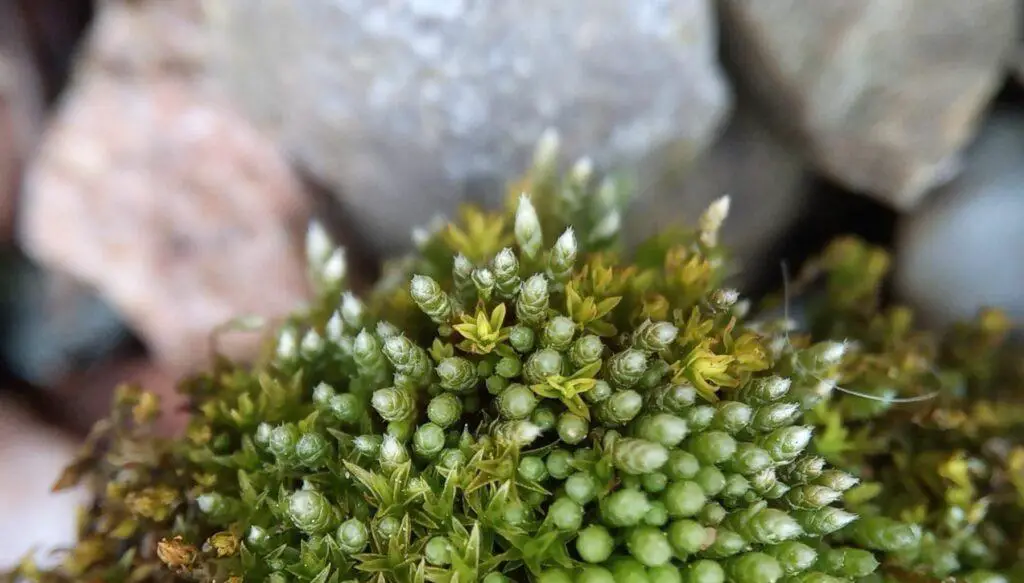
Bryum-Argenteum-Silver-Moss-Sidewalk-Moss-Crack-Moss-Asphalt-Moss-6-1024×583.jpg from: https://mossandstonegardens.com/species/silver-moss-bryum-argenteum-ecology-distribution-cultivation/
Exploring the Fascinating World of Bryum Hedw. Moss
Introduction
Mosses are small but mighty plants that play important roles in ecosystems around the world. In this blog post, we’ll take a closer look at one particular genus of moss: Bryum Hedw., also known simply as Bryum. Part of the Bryaceae family, Bryum mosses are found on every continent except Antarctica. Let’s dive in and learn more about the morphology, distribution, habitat, ecology, and adaptations of these fascinating non-vascular plants.
Background on Bryum Mosses
Bryum is a genus of mosses in the family Bryaceae, which is part of the class Bryopsida in the division Bryophyta. There are over 400 species of Bryum mosses worldwide. They lack true roots, stems, and leaves like vascular plants. Instead, they have rhizoids that anchor them and absorb water and nutrients. Bryum mosses reproduce via spores rather than seeds.
Morphology and Identification
Bryum mosses form small cushions or tufts, typically 1-3 cm tall. Their phyllids (leaf-like structures) are ovate to lanceolate and have a strong midrib. Bryum mosses often have distinctive reddish stems. The capsules (spore-producing structures) are held on long seta (stalks) and have peristome teeth in multiples of 16.
Some key characteristics for identifying Bryum mosses:
- Small size (under 3 cm tall)
- Ovate to lanceolate phyllids with strong midrib
- Reddish stems common
- Capsules on long seta with peristome teeth in multiples of 16
Global Distribution and Habitat
Bryum mosses have a cosmopolitan distribution and are found on every continent except Antarctica. They grow in a wide variety of habitats, including:
- Soil
- Rocks
- Tree bark
- Rotting logs
- Disturbed areas
Some species have very broad ranges, while others are narrow endemics. Many Bryum mosses are weedy and thrive in urban and disturbed environments.
Ecological Roles and Adaptations
Like other mosses, Bryum plays important ecological roles:
- Helps retain moisture in the soil
- Stabilizes soil and prevents erosion
- Provides shelter and food for invertebrates
- Pioneers in ecological succession, allowing other plants to establish
Bryum mosses have several adaptations that allow them to thrive:
- Poikilohydry – ability to survive desiccation
- Rhizoids anchor the moss and absorb water and nutrients
- Spores allow long-distance dispersal
- Clonal growth allows local spread
Conclusion
From the Arctic to the tropics, Bryum mosses are found in diverse habitats around the globe. Although small, these mighty mosses play outsized ecological roles. Their unique adaptations allow them to thrive where other plants cannot. Next time you see a small cushion of moss, take a closer look – it just might be a Bryum! What other roles do you think these tiny but tenacious plants play in the environment?